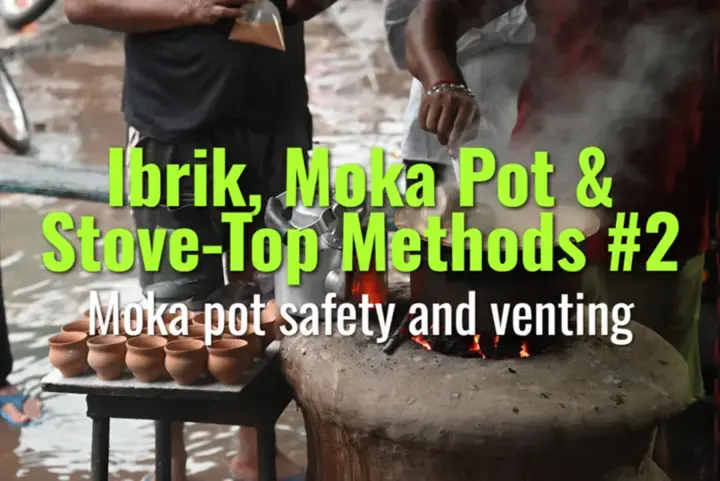Moka pot safety and venting
How to use a Moka pot safely, focusing on proper venting, pressure control, and common safety precautions.
- Coffee Basics Nerds
- 1 min read
Article 2 of 12 in Ibrik, Moka Pot & Stove-Top Methods/

Safety Valve Function
- All Moka pots are equipped with a safety valve on the boiler chamber.
- Purpose: release excess steam if pressure builds dangerously.
- Prevents rupture or explosion due to overfilling, clogging, or faulty assembly.
Common Safety Risks
- Overfilling Boiler: Water above safety valve level blocks venting.
- Excessive Coffee Dose: Grounds packed too tightly restrict flow.
- Clogged Filter or Gasket: Stops steam passage → dangerous pressure buildup.
- Damaged Valve: Failure to release pressure can cause pot failure.
Proper Venting Practices
- Fill boiler only to valve level (never cover the valve).
- Check valve for cleanliness and mobility before use.
- If valve hisses or leaks prematurely, clean or replace it.
Heat Management
- Use medium-low heat—high flames overheat and increase pressure too quickly.
- Correct extraction relies on steady, gentle steam generation.
- Avoid leaving Moka pot unattended—steam can surge unexpectedly.
Maintenance for Safety
- Regularly inspect and replace gaskets to prevent leaks.
- Clean coffee oils from filter plate and funnel to avoid blockages.
- Test valve occasionally by pressing lightly (should move freely).
Summary
Moka pot safety depends on respecting the safety valve, proper filling, and regular maintenance. By avoiding overfilling, keeping parts clean, and using controlled heat, users ensure both safe operation and reliable extraction from this classic stove-top brewer.